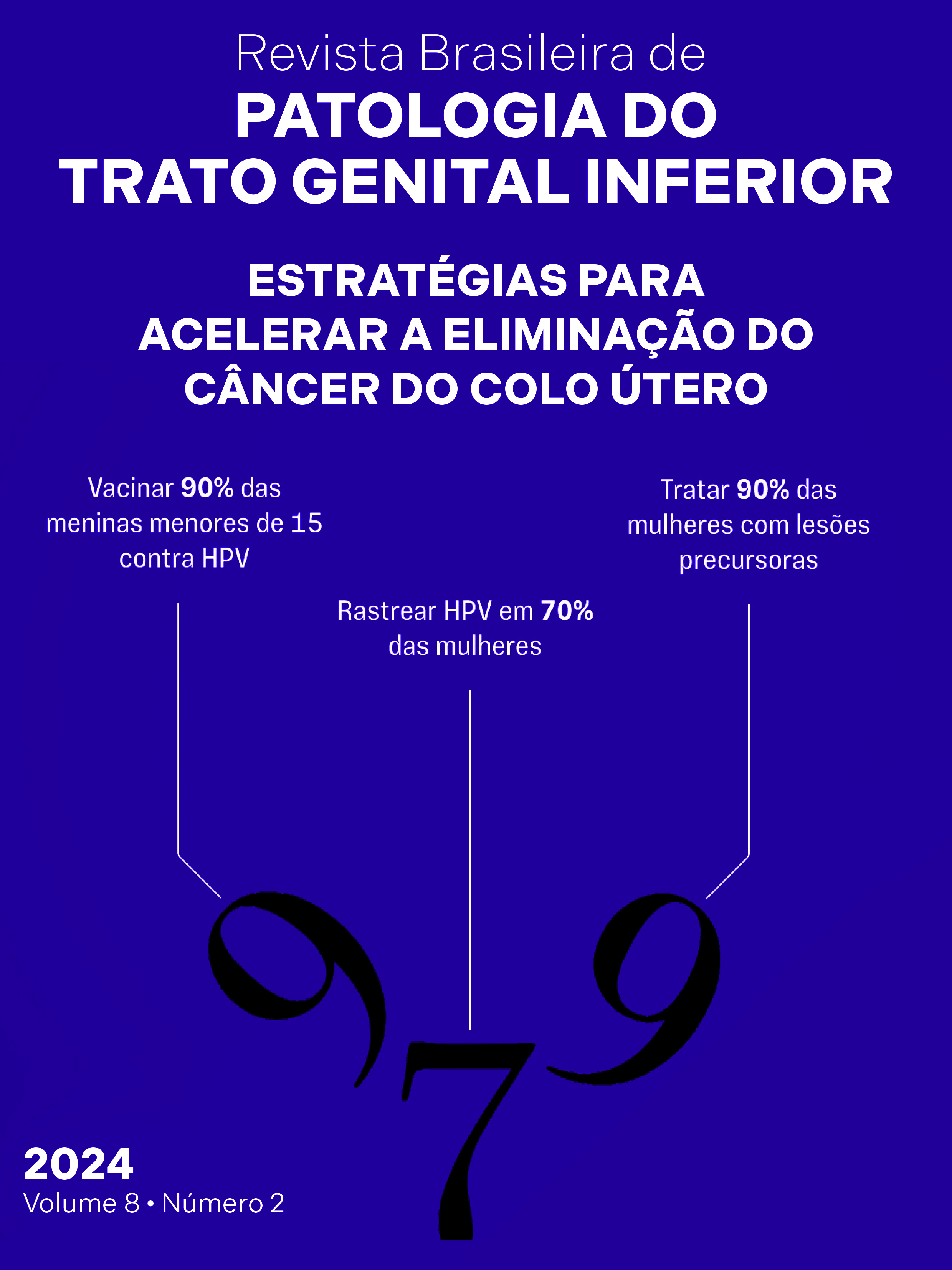How do I use pulsed radiofrequency in the treatment of benign and precancerous vulvar lesions?
DOI:
https://doi.org/10.5327/2237-4574-2024820014Keywords:
radiofrequency therapy, vulvar disease, squamous intraepithelial lesion, neoplasmsAbstract
Radiofrequency can be used as an excisional or destructive therapeutic method for various lesions of the lower genital tract.
High-frequency electrosurgical devices that produce a type of wave called pulsed can control the thermal effect of depth,
adapting to different tissues according to tissue impedance, with adequate regenerative and aesthetic-healing results. The vulva
can be affected by various benign pathologies and by precursor lesions of cancer, cases in which the healing result is important
for preserving the anatomy, especially in cases subject to recurrence. We describe some uses of this type of energy in gynecology.
References
Maness WL, Roeber FW, Clark RE, Cataldo E, Riis D, Haddad AW.
Histologic evaluation of electrosurgery with varying frequency
and waveform. J Prosthet Dent. 1978;40(3):304-8. https://doi.
org/10.1016/0022-3913(78)90037-9
Lima EA. IPCA® indução percutânea de colágeno com agulhas. Rio
de Janeiro: Guanabara Koogan; 2016.
Instituto Nacional de Câncer José Alencar Gomes da Silva. Coordenação
de Prevenção e Vigilância. Divisão de Detecção Precoce e Apoio à
Organização de Rede. Diretrizes brasileiras para o rastreamento do
câncer do colo do útero. Rio de Janeiro: INCA; 2016.
Taheri A, Mansoori P, Sandoval LF, Feldman SR, Pearce D, Williford
PM. Electrosurgery: part I. Basics and principles. J Am Acad Dermatol.
;70(4):591.el-591e14. https://doi.org/10.1016/j.jaad.2013.09.056
Kamilos MF, Borrelli CL, Sciuto R, Cotrim FP, Veiga ECA, Soares Júnior
JM, et al. Is electrosurgery fulguration a better procedure for Bartholin’s
gland cyst? Rev Assoc Med Bras (1992). 2020;66(2):201-9. https://
doi.org/10.1590/1806-9282.66.2.201
Casabona G, Presti C, Manzini M, Machado Filho CDS. Radiofrequência
ablativa fracionada: um estudo piloto com vinte casos para
rejuvenescimento da pálpebra inferior. Surg Cosmet Dermatol.
;6(1):50-5.
Mulholland RS, Kreindel M, Paul M. Fractional ablative radio-frequency
resurfacing in asian and caucasian skin: a novel method for deep
radiofrequency fractional skin rejuvenation. Journal of Cosmetics,
Dermatological Sciences and Applications. 2012;2(3):144-50. https://
doi.org/10.4236/jcdsa.2012.23029
Jaiswal P, Dhali TK, D’Souza P. Comparative study of effecacy of
radiofrequency ablation, electrodesiccation, and cryosurgery in the
treatment of cutaneous warts. Journal of Dermatology Surgery.
;23(1):24-9. https://doi.org/10.4103/jdds.jdds_37_18
Vlastos AT, Levy LB, Malpica A, Follen M. Loop electrosurgical excision
procedure in vulvar intraepithelial neoplasia treatment. J Low Genit
Tract Dis. 2002;6(4):232-8. https://doi.org/10.1097/00128360-
-00008
Alexiades M, Berube D. Randomized, blinded, 3-arm clinical trial
assessing optimal temperature and duration for treatment with
minimally invasive fractional radiofrequency. Dermatol Surg.
;41(5):623-32. https://doi.org/10.1097/DSS.0000000000000347
Sarmento AC, Fernandes FS, Marconi C, Giraldo PC, Eleutério-Júnior J,
Crispim JC, et al. Impact of microablative fractional radiofrequency
on the vaginal health, microbiota, and cellularity of postmenopausal
women. Clinics (Sao Paulo). 2020;75:e1750. https://doi.org/10.6061/
clinics/2020/e1750
Seki AS, Bianchi-Ferraro AMHM, Fonseca ESM, Sartori MGF, Girão
MJBC, Jarmy-Di Bella ZIK. CO2
laser and radiofrequency compared
to a sham control group in treatment of stress urinary incontinence
(LARF study arm 3). A randomized controlled trial. Int Urogynecol J.
;33(12):3535-42. https://doi.org/10.1007/s00192-022-05091-y
Slongo H, Lunardi ALB, Riccetto CLZ, Machado HC, Juliato CRT.
Microablative radiofrequency versus pelvic floor muscle training
for stress urinary incontinence: a randomized controlled trial. Int
Urogynecol J. 2022;33(1):53-64. https://doi.org/10.1007/s00192-
-04758-2
Sarmento ACA, Fernandes FS, Maia RR, Camargo JDAS, Crispim JCO,
Eleutério Júnior J, et al. Microablative fractional radiofrequency for
sexual dysfunction and vaginal Trophism: a randomized clinical
trial. Clinics (Sao Paulo). 2023;78:100293. https://doi.org/10.1016/j.
clinsp.2023.100293
Fernandes MFR, Bianchi-Ferraro AMHM, Sartori MGF, Jármy Di Bella
ZIK, Cantarelli GC, et al. CO2
laser, radiofrequency, and promestriene
in the treatment of genitourinary syndrome of menopause in breast
cancer survivors: a histomorphometric evaluation of the vulvar
vestibule. Menopause. 2023;30(12):1213-20. https://doi.org/10.1097/
GME.0000000000002274
Kamilos MF, Fialho SA. A radiofrequência fracionada no tratamento de
líquen escleroso vulvar: um relato de caso. Femina. 2020;48(12):764-8.
Kamilos MF, Aguiar LM, Batista VH, Roa CL, Aguiar FN, Soares Júnior
JM, et al. Microablative fractional radiofrequency as a therapeutic
option for vulvar lichen sclerosus: a pilot study. Clinics (Sao Paulo).
;76:e2567. https://doi.org/10.6061/clinics/2021/e2567

